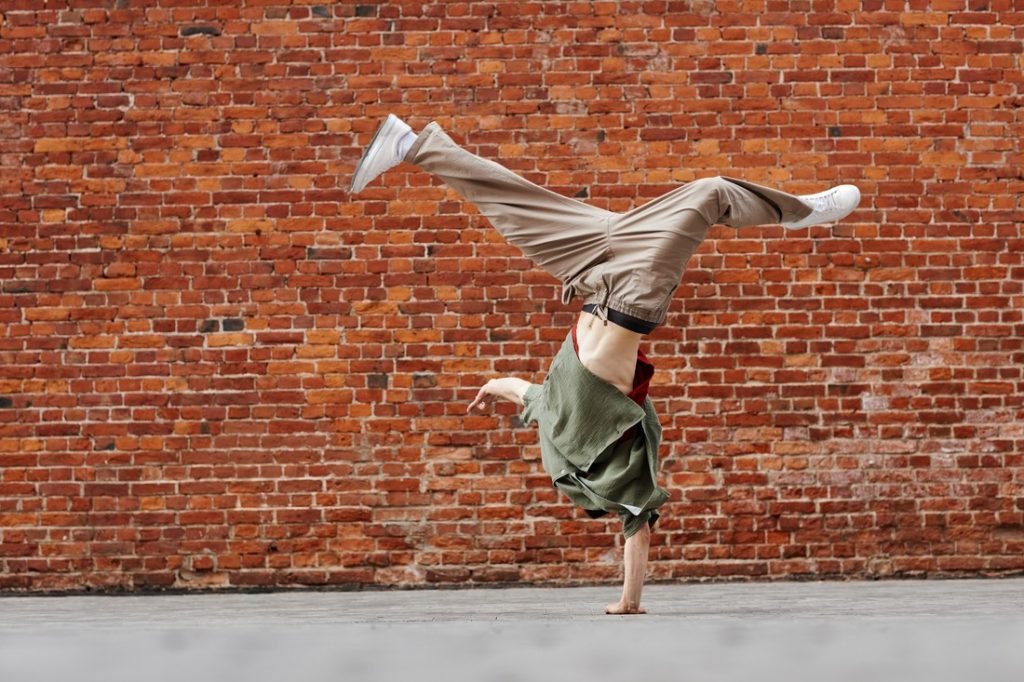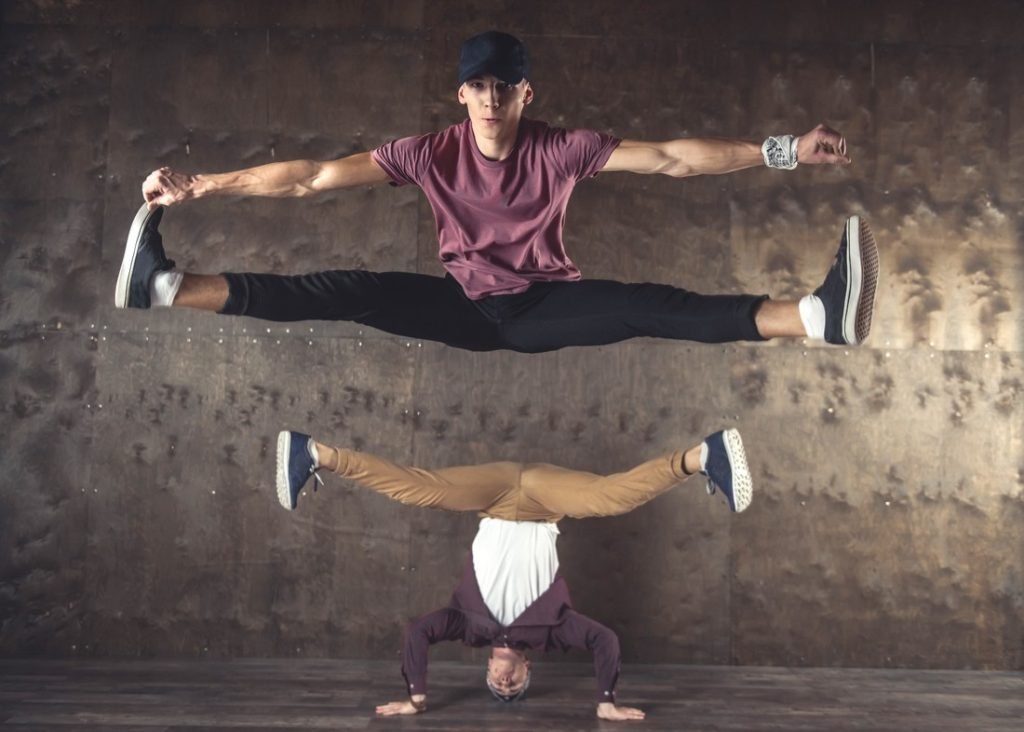Dance has an energy that can touch your soul. It’s not just about moving your body to the rhythm; it’s about expressing yourself and telling a story through movement. Dance is a powerful tool that can help you grow personally, mentally, and physically. In this blog, we will explore the power of dance and how it can transform your life, from building confidence to improving mental health. We will dive into different dance genres and their unique styles, essential dance moves for every dancer, and techniques for winning performances. We’ll also share inspiring stories of individuals who have transformed through dance and answer the question – Can Dance Change Your Life? Get ready to unleash the power of dance and dominate in every aspect of your life!
Understanding the Power of Dance
Dance has a unique power that goes beyond language and cultural differences. It serves as a universal medium of expression that can connect people from all walks of life. Through dance, individuals have the opportunity to express themselves creatively, tapping into their emotions and enhancing their overall well-being. Dancing offers a therapeutic escape, helping to alleviate stress and anxiety. Within the world of dance, self-expression takes center stage. Whether on a grand stage or in an intimate setting, dancers are able to communicate their thoughts, feelings, and stories through movement. This allows for a deeper connection with oneself and with others who witness the performance. The ability to convey emotions and messages through dance is a profound form of communication that speaks to the human experience. In addition to self-expression, dance has the power to break down cultural barriers. It transcends boundaries, enabling individuals from different backgrounds and traditions to come together in celebration of movement and music. Dance unites people in a shared experience, fostering an understanding and appreciation of diverse cultures.

Overall, the power of dance lies in its ability to empower individuals, promote self-expression, and foster connections. From providing a creative outlet to serving as a therapeutic release, it has the capacity to transform lives. So, whether you’re a seasoned dancer or just starting out on your dance journey, embrace the power of dance and let it guide you towards self-discovery and personal growth.
The Role of Dance in Personal Growth
Dance plays a significant role in personal growth, offering various benefits that extend beyond the dance floor. One of the key advantages is how it builds self-confidence and improves body awareness. Through dance, individuals learn to embrace their bodies and movements, boosting their self-esteem. Additionally, the discipline required in practicing and perfecting dance routines fosters self-discipline, perseverance, and dedication. These qualities carry over into other aspects of life, helping individuals overcome challenges and achieve their goals. Another aspect of personal growth facilitated by dance is the encouragement of teamwork and collaboration. Dance often involves group performances, where dancers need to synchronize their movements and work together cohesively. This cultivates team spirit and the ability to cooperate with others effectively. Moreover, the sense of achievement derived from mastering complex dance routines contributes to personal growth. The satisfaction of successfully executing challenging moves drives individuals to push their limits and strive for continuous improvement. Overall, dance proves to be a transformative experience, fostering personal growth on both a physical and emotional level. It instills a sense of accomplishment, boosts self-confidence and discipline, encourages teamwork, and unlocks individual potential. By engaging in dance, individuals embark on a journey of personal development, unravelling hidden talents, and discovering new facets of themselves. So, whether you’re an aspiring dancer or someone looking to explore a new form of self-expression, dance is a powerful tool for personal growth.
The Psychological Impact of Dance
Dancing has a profound psychological impact on individuals. When we dance, our bodies release endorphins, which are natural mood boosters that reduce stress. These feel-good chemicals can instantly uplift our spirits and improve our overall well-being. Moreover, engaging in dance improves cognitive function, memory, and focus. The complex movements and sequences require mental agility and enhance our ability to retain information. Another psychological benefit of dance is its ability to provide an outlet for emotional expression and healing. Through movement, we can convey and release emotions that may be difficult to express verbally. This form of emotional release can be therapeutic and aid in the healing process. Furthermore, dance promotes positive body image and self-esteem. By embracing our bodies’ natural movements and appreciating the beauty of different dance styles, we develop a healthier relationship with our physical selves.
Classical Dance and its Influence
Classical dance has its roots in rich cultural traditions that have been passed down through generations. It is a form of dance that requires years of dedicated training and the mastery of intricate choreography. This art form has had a profound impact on other dance styles around the world, influencing and shaping their development. One of the reasons classical dance holds such influence is because of the incredible talent and skill of its performers. Prominent classical dancers have left an indelible mark on the dance world, showcasing the beauty and power of this art form. Their performances captivate audiences and inspire aspiring dancers to reach new heights. The influence of classical dance can be seen in various dance forms globally. Whether it’s the grace and storytelling of ballet or the fusion of classical techniques with contemporary movements, classical dance has permeated the dance scene worldwide. It has become a foundation for many dancers, providing them with a solid base from which they can explore and create. In conclusion, classical dance is a testament to the enduring power and beauty of traditional dance forms. It has influenced and shaped the trajectory of dance history, leaving a lasting impression on the world of performing arts. Through its intricate choreography and remarkable performers, classical dance continues to inspire and captivate audiences across the globe.

In recent years, popular TV shows like “World of Dance” have showcased modern dance, bringing it into the mainstream spotlight. Social media platforms like Twitter provide a platform for aspiring dancers to share their talents and connect with the dance community. Modern dance has even influenced popular culture, with artists like Michael Jackson and Britney Spears incorporating elements of it into their performances.
As the world of dance evolves, modern dance remains a powerful force for self-expression and artistic exploration. It challenges convention and encourages dancers to push their boundaries, both physically and creatively. Modern dance truly is a new age revelation that continues to shape the future of dance.

Dance is a powerful tool for personal growth and transformation. It has the potential to shape not only our physical abilities but also our mental and emotional well-being. By understanding the psychological impact of dance, we can fully appreciate its transformative power and harness it to create a positive impact in our lives.
Dance Genres and their Unique Styles
Classical dance exudes grace, precision, and the art of storytelling through fluid movements. This genre, rooted in tradition and history, showcases the dancers’ ability to convey emotions and narratives with elegance and poise. Modern dance, on the other hand, celebrates freedom of movement and self-expression. It rejects the strict rules of classical dance, allowing dancers to explore their creativity and push boundaries in choreography. With its emphasis on individuality and versatility, modern dance captivates audiences with its unique interpretations and unconventional techniques. Hip-hop dance, with its combination of athleticism and urban culture, has become a global phenomenon. Originating from street dance forms, this genre incorporates intricate footwork, body isolations, and dynamic movements that demand strength and agility. It also serves as a powerful medium for social commentary and self-expression, reflecting the experiences and voices of marginalized communities. Ballet, renowned for its elegance and technicality, demands years of rigorous training and discipline. Performers effortlessly execute breathtaking pirouettes, grand jetés, and delicate pointe work, showcasing their incredible strength, balance, and control. Ballet’s timeless beauty and ethereal quality continue to inspire dancers worldwide. By incorporating these diverse dance genres into their performances, dancers can present a fusion of styles that push boundaries and transcend traditional expectations. Each genre brings its own unique flair and artistic expressions, captivating audiences with its distinct characteristics. Whether it’s the grace of classical dance, the freedom of movement in modern dance, the athleticism of hip-hop, or the elegance of ballet, each genre offers its own journey of exploration and creativity.
Modern Dance: A New Age Revelation
Modern dance, a new age revelation, emerged as a radical departure from traditional ballet techniques. This dynamic art form incorporates elements of improvisation and expressiveness, allowing dancers to break free from the confines of rigid choreography. Pioneers like Martha Graham revolutionized modern dance, pushing boundaries and challenging societal norms.
In contrast to the structured and precise movements of classical ballet, modern dance celebrates individuality and personal expression. Dancers have the freedom to explore their emotions and tell stories through their movements. The improvisational nature of modern dance encourages dancers to trust their instincts and embrace spontaneity on stage.
The impact of modern dance on the dance world cannot be underestimated. It has inspired countless choreographers, shaping the evolution of dance as an art form. From New York to South Africa, modern dance continues to captivate audiences around the globe with its raw energy and innovative movements.
Dance Techniques for Winning Performances
Mastering the fundamental techniques of dance is crucial for achieving success on the competition stage. By honing these foundational skills, dancers can build a solid base upon which to elevate their performances. Proper body alignment and posture play a vital role in enhancing the overall quality of a dance routine. When dancers maintain a correct alignment, their movements become more fluid and graceful, captivating both judges and audiences alike.
Another key element of winning performances is musicality and rhythm. Dancers who have an innate sense of musicality can seamlessly synchronize their movements with the music, creating a mesmerizing and harmonious experience. The ability to feel and interpret the rhythm allows dancers to infuse their routines with energy and emotion, making them stand out from the competition.
In addition to mastering technique and musicality, building strength and flexibility are essential for improving overall dance abilities. Strong and flexible muscles enable dancers to execute challenging moves with precision and ease. They can effortlessly transition between different positions, leaps, and turns, captivating the audience with their agility and control.
By incorporating these dance techniques, such as mastering fundamental skills, focusing on body alignment, and harnessing musicality and rhythm, dancers can increase their chances of winning competitions and leaving a lasting impression on judges and spectators alike. Remember to practice consistently and seek guidance from experienced choreographers to refine your performance further.

How does Dance Empower You?
Dance empowers individuals by allowing them to express their true selves and discover their potential. It breaks societal norms, liberating dancers to embrace their uniqueness. Dance instills a sense of empowerment, helping individuals transform and inspire others.
Essential Dance Moves for Every Dancer
When it comes to dancing, there are certain essential moves that every dancer should master. These moves not only form the foundation of many dance styles but also showcase technical skill and add flair to performances. Let’s explore some of these essential dance moves.
Jazz squares, pirouettes, and leaps are fundamental dance moves that are commonly used in various dance genres. Jazz squares involve crossing your legs and arms in a square pattern while moving from one corner to another. Pirouettes are elegant spins performed on one leg, requiring balance and control. Leaps, on the other hand, involve jumping into the air and extending your legs outward before landing gracefully.
To add flair and expressiveness to your dance routines, body isolations and hip movements are key. Body isolations involve moving different parts of your body independently, creating visually striking and dynamic movements. Hip movements, such as hip rolls and pops, can add a touch of sensuality and rhythm to your performances.
Choreography with precise footwork is essential in showcasing technical skill and coordination. It requires dancers to execute intricate patterns and sequences with accuracy and precision. This not only demonstrates their mastery of the dance style but also captivates the audience with their flawless execution.
Partner work and lifts are another aspect of dance that adds excitement and showcases trust and coordination between dancers. Whether it’s intricate partner choreography or breathtaking lifts, these moves require dancers to work harmoniously together, relying on each other’s strength and support.
By mastering these essential dance moves, dancers can elevate their performances and stand out on the dance floor. So, whether you’re a beginner or an experienced dancer, make sure to practice and incorporate these moves into your repertoire to become a versatile and captivating performer.
Transforming Through Dance: Inspiring Stories
Many dancers have triumphed over challenges through the power of dance. They have faced adversity head-on and conquered it with their graceful movements. Dancing has transformed their lives, providing them with a sense of purpose and fulfillment. These inspiring stories of dancers’ journeys serve as beacons of hope, motivating others to chase after their dreams.
Through dance, individuals not only find an avenue for self-expression but also discover their true potential and resilience. It is in the rhythmic steps and flowing movements that they uncover a strength they never knew they had. Dance becomes a catalyst for personal growth and transformation.
Take, for example, the story of Maria, who grew up in a small town in South Africa dreaming of becoming a professional dancer. Despite facing financial difficulties and societal expectations, she never let go of her passion. With relentless determination, she honed her skills and eventually earned a scholarship to a prestigious dance academy in New York. Today, she travels the world as a renowned choreographer, inspiring countless aspiring dancers along the way.
Another inspiring tale is that of Mark, who found solace in dance after losing his job and going through a difficult divorce. Dancing became his sanctuary, allowing him to express his emotions and heal from within. Through his perseverance and talent, he secured a spot on a popular TV dance competition and went on to win the hearts of millions. His journey serves as a reminder that dance has the power to lift us up and help us overcome even the darkest times.
In conclusion, dance has the ability to transform lives and inspire others to pursue their dreams. It provides a channel for individuals to overcome adversity, discover their purpose, and embrace their resilience. These inspiring stories of triumph serve as a testament to the transformative power of dance, reminding us all that anything is possible when we let our bodies move to the rhythm of our souls.
Can Dance Change Your Life?
The production of a short video goes through several key phases. Pre-production entails careful planning, including scriptwriting and storyboarding to outline the video’s structure. The production phase involves capturing high-quality footage using professional equipment, ensuring visual and auditory excellence. Once the filming is done, it’s time for post-production. During this phase, you edit the video, add effects, and make final adjustments to create a polished product. Each of these phases requires attention to detail and coordination with your team to ensure a smooth workflow and timely delivery. By following a structured production process, you can effectively bring your creative vision to life.
Conclusion
In conclusion, crafting a winning short video requires a combination of creativity, strategic planning, and effective execution. It is essential to understand the basics of short video competitions and the role that creativity plays in standing out from the competition. By identifying the purpose of your video, recognizing your target audience, and deciding on a captivating storyline, you can create a video that resonates with viewers. Additionally, keeping creative constraints in check, considering the budget, and adhering to a realistic timeline are crucial for successful production. Collaboration with others can also bring value by leveraging brand familiarity, cost advantages, and ensuring quality and consistency. Lastly, measuring the success of your short video through key performance indicators helps you improve your content for future competitions. So, unleash your creativity, tell a compelling story, and make your short video stand out in the crowd.
